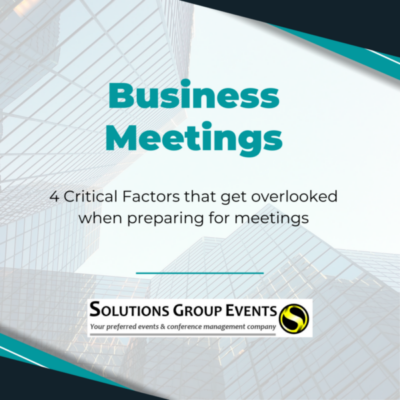
EVENT INDUSTRY TRENDS TO WATCH OUT FOR
Although we are collectively eager to return to the pre-COVID era, one thing is certain – things will never be the same.
Here are some of the event trends you should be mindful of :
-
Virtual is Here to Stay
Digital remaining a major component of the event strategy.
Why? Because the roll out of the Covid-19 vaccinations will be a lengthy process with tier-wise priority given to the recipients – based on risk, need and profession. Secondly, not all attendees will be entirely comfortable with travelling to the event venue. Thirdly, by now everyone has seen the value that can be derived from them and is familiar with the usability.
Especially, organizations where events are not the main revenue-drivers and/or who have a large percentage of customers located globally, will host events online.
-
Speaker Management
But it is not just about technology. To ensure the success of the event, you will need to choose the speakers carefully too. Ultimately speakers are responsible for making or breaking content. Be they internal or external speaker.
One option is to hire speakers who have become experts in speaking at virtual events and at keeping online attendees engaged
Regardless of the choice made, for a live session to run seamlessly, enough time and budget needs to be allocated to conducting rehearsals and dry runs. But if you want to reduce the burden on speakers, consider pre-recording sessions and bringing up the speakers for the live Q&A segment.
-
Virtual Event Platform
The virtual event platform you choose to host your event on means everything. Thus, you must invest in a virtual platform that provides you a one-stop solution.
Create a list of your platform requirements and scout for a virtual event platform that checks most of the boxes (if not all). Look at the sort of networking options available, how the agenda is displayed, whether it has an event feed and the kind of integrations it offers when it comes to streaming your sessions.
At the same time, the most important parameter to keep in mind is user-friendliness. Yes, including the latest fancy features in your event will make your event look cool but ultimately you want your audience to get a good experience.
-
Community Building
The benefits of using virtual technology are that it has become easier than ever to have data recorded on the fly, which can be stored and accessed as needed. This means if you are part of an organization or association that wants to focus on creating communities, your life will become so much easier.
By investing an additional amount on a virtual event platform, you can make it available year-round. This will give your attendees continued access to on-demand content, extended opportunity to network with one another and stay engaged through endless gamification. This will not only improve their learning experience but give them an environment to participate in deeper conversation.
-
Hybrid Will Be King
This means you will have to plan for different attendee groups i.e. those that will attend your event in-person and those who will access it remotely.
-
1+1
Eventually most hybrid events will have a large in-person component along with its digital counterpart. This will make them globally accessible and inclusive. But the challenge would be to ensure that the experience for both groups of attendees is equal and neither of them feel neglected.
If the in-person attendees are getting a chance to stumble upon someone in the lounge, so should the virtual attendees have access to the virtual lounge. If the in-person attendees are attending an insightful session, then the virtual attendees must also be able to view the same session on their devices.
If the in-person attendees are getting swag bags so should your online audience (even if they are in the form of digital swag bags with e-coupons).
-
Best of Both Worlds
While creating the same (or similar) experience is essential, you will need to also come up with ways to break the boundaries between the two parties by facilitating 2-way communication. Remember, it may be 2021 but it is not game over for apps. Event apps will be THE thing that help to connect both your user groups.
Your in-person attendees should be able to read and participate in discussions initiated by online users on the event feed. Also, your attendees should be able to drop their e-business cards and even schedule meetings with each other.
While the virtual attendees will have their laptop screens in front of them, your in-person attendees can engage with them via meeting rooms located at the venue that have projectors. Alternatively, you could consider installing small rooms or kiosks to facilitate more private 1:1 meeting.
-
Hub and Spoke
Big events such as large annual conferences will end up following the Hub and Spoke model. This means there will be a main hub where the event will take place and it will be streamed across smaller glocalised clusters.
This will make room for more personalized conversations to occur and also remove the need for travelling. But that does not mean the clusters will become aloof in themselves. Instead, the anchor in this case would again be event technology. As discussed previously, it will be used to connect the attendees located in different regions and different platforms (i.e. online and offline).
-
Health and Safety First
The major criteria with which attendees will select whether to attend an event’s physical component will be the health safety measures taken.
Some things you can include to gain attendee trust are:
- Selecting spacious venues that allow social distancing to be implemented and support touchless technology.
- Offering option to pre-select seats, so that every sits on designated seats.
- Ensuring temperature checks on entry and even onsite Antigen quick testing.
- Asking attendees to carry a digital health passport that certifies they have been vaccinated.
- Providing COVID-special event kits, which includes masks, face shields, gloves, sanitizers, PPE kits and social distancing color-coded wristbands which take a cue from traffic lights (RED – prefers no contact, YELLOW – prefers elbow bumps, GREEN – prefers high-fives).
- Appointing COVID offers to enforce compliance.
- Hosting activities outdoors.
- Having an efficient ventilation system installed for indoor sessions.
- Reinforcing the concept of wearing masks.
- Installing sanitization stations across the event and automated disinfectant spray chambers.
- Offering plated meals with staggered eating times.
- Including sanitization breaks to get the venue sanitized at regular intervals.
- Including wellness and fitness breaks in your agenda.
Think Data Privacy and Security
Virtual events have made it so much easier to track attendee actions and behaviour – creating both an opportunity to attract sponsors and raising questions on attendee privacy.
But consumers are getting increasingly wary of sharing their data. Also, with such an immense amount of data available, there is always the risk of hacking and data breaches. Data has now become more valuable than ever. The is your hands to be transparent as a brand and to ensure you only collect data where required.
Here are some best practices to follow :
- Always disclose your privacy policy to your attendees.
- Understand the regulations around data.
- Pick a virtual event platform that is GDPR compliant.
- Be transparent. Let your attendees know how you will be using their data.
- Understand different technology and see what can cause a data breach.
- Invest in cyber security insurance.
- Appoint a data protection officer.
Sustainability at the Core of Event Design
As the event industry picks up steam, sustainability will gain quite a bit of momentum. We are more aware of our impact on the world around us than ever before. Attendees will favour events that consciously think about the environment and include eco-friendly initiatives. This means it won’t just be about taking simple measures, rather you need to keep sustainability at the centre of your event planning and designing.
Conclusion
This is another challenging year for everyone. Considering the uncertainty that will prevail the rest of this year, the brands that will truly stand out are those that are willing to be flexible; that are ready to experiment and emphasize on evolving by learning from past errors.
The way events were typically consumed has changed. It’s time to unlearn what you have learnt. Rather, plan the attendee journey from the beginning, to provide an integrated experience.
Use these current times to reset, rethink, reimagine and redesign your event so that it stays resilient and sustainable.
And when you are looking for the right futuristic conceptualisation, production and technology roll out for your events, we will be here for you!
+27 83 675 6666
Content per blog.hubilo.com




